 | TODAY IN SCIENCE HISTORY
NEWSLETTER - 31 MAY |
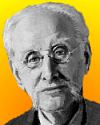 On 31 May 1845, Rookes Evelyn Bell Crompton was born, a British engineer and inventor who as a young man made a steam road engine (1860) and worked on other steam road haulage projects. When his interests turned to electric lighting, importing then manufacturing arc lamps of his own improved design, he began a career pioneering in the electrical industry, establishing the Crompton Company. By 1883, he had provided public lighting for large buildings, markets and railway stations. His company expanded, making domestic electric appliances (such as for heating and cooking). On 31 May 1845, Rookes Evelyn Bell Crompton was born, a British engineer and inventor who as a young man made a steam road engine (1860) and worked on other steam road haulage projects. When his interests turned to electric lighting, importing then manufacturing arc lamps of his own improved design, he began a career pioneering in the electrical industry, establishing the Crompton Company. By 1883, he had provided public lighting for large buildings, markets and railway stations. His company expanded, making domestic electric appliances (such as for heating and cooking).
When the Biography of Rookes Evelyn Bell Crompton appeared in The Electrician (1884), a few months before his 40th birthday, he already had a remarkable life of accomplishment... and he had a lot more ahead of him. |
 On 31 May 1845, Rookes Evelyn Bell Crompton was born, who was a pioneer in the fledgling British electrical industry. Today's Science Store pick is: Children of Light: How Electrification Changed Britain Forever, by Gavin Weightman, who explores the electric revolution that brought not only the replacement of gas with electricity for lighting, but also the electrification of the tramways and the London Underground, the transformation of the home with 'labour saving' devices and the vital modernising of industry during two world wars. New $24.98 (as of time of writing). On 31 May 1845, Rookes Evelyn Bell Crompton was born, who was a pioneer in the fledgling British electrical industry. Today's Science Store pick is: Children of Light: How Electrification Changed Britain Forever, by Gavin Weightman, who explores the electric revolution that brought not only the replacement of gas with electricity for lighting, but also the electrification of the tramways and the London Underground, the transformation of the home with 'labour saving' devices and the vital modernising of industry during two world wars. New $24.98 (as of time of writing).
Yesterday's pick: To Conquer the Air: The Wright Brothers and the Great Race for Flight, by James Tobin
For picks from earlier newsletters, see the Today in Science Science Store home page. | |
 | "Armed with all the powers, enjoying all the wealth they owe to science, our societies are still trying to practice and to teach systems of values already destroyed at the roots by that very science. Man knows at last that he is alone in the indifferent immensity of the universe, whence which he has emerged by chance. His duty, like his fate, is written nowhere." - Jacques Monod, French biochemist (died 31 May 1976)  |
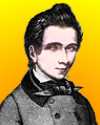 | "(As a young teenager) Galois read (Legendre's) geometry from cover to cover as easily as other boys read a pirate yarn."
- Eric Temple Bell about Evariste Galois, French mathematician (died 31 May 1832)  |
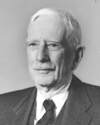
| "In time, manufacturing will to a great extent follow the sun." (Speculating that with development of solar power the deserts would become great industrial areas. Quoted in Popular Mechanics, 1928.)
- Francois Marie Arouet Voltaire, French author (died 30 May 1778)  |
| Before you look at today's web page, see if you can answer some of these questions about the events that happened on this day. Some of the names are very familiar. Others will likely stump you. Tickle your curiosity with these questions, then check your answers on today's web page. |
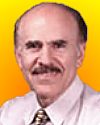 |  Louis J. Ignarro, born 31 May 1941, American pharmacologist who was co-awarded the 1998 Nobel Prize in Physiology or Medicine for the discovery that a simple molecule - just two atoms - acts as a signaling molecule in the cardiovascular system, an entirely new mechanism by which blood vessels in the body relax and widen. At first, major professional journals refused to publish his contention that a substance that is basic to nitroglycerin and part of the chemistry of smog is also crucial to the life process. But over the years, others repeated his work and confirmed his discovery that this molecule is a neurotransmitter that is, says Ignarro, "perhaps the most widespread signaling molecule that allows a variety of different cell types to communicate with one another." Louis J. Ignarro, born 31 May 1941, American pharmacologist who was co-awarded the 1998 Nobel Prize in Physiology or Medicine for the discovery that a simple molecule - just two atoms - acts as a signaling molecule in the cardiovascular system, an entirely new mechanism by which blood vessels in the body relax and widen. At first, major professional journals refused to publish his contention that a substance that is basic to nitroglycerin and part of the chemistry of smog is also crucial to the life process. But over the years, others repeated his work and confirmed his discovery that this molecule is a neurotransmitter that is, says Ignarro, "perhaps the most widespread signaling molecule that allows a variety of different cell types to communicate with one another."
 What is the molecule? What is the molecule? |
 |  Charles Greeley Abbot, born 31 May 1872, was an American astrophysicist who studied the radiation of the Sun. As director of the Smithsonian Astrophysical Observatory, he established a network of solar radiation observatories around the world. Beginning in May 1905 and continuing over decades, his studies of solar radiation led him to discover, in 1953, an interesting feature of the behaviour of the radiation. Charles Greeley Abbot, born 31 May 1872, was an American astrophysicist who studied the radiation of the Sun. As director of the Smithsonian Astrophysical Observatory, he established a network of solar radiation observatories around the world. Beginning in May 1905 and continuing over decades, his studies of solar radiation led him to discover, in 1953, an interesting feature of the behaviour of the radiation.
 After decades of study, what did he discover about the sun's radiation? After decades of study, what did he discover about the sun's radiation? |
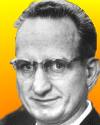 |  Leo James Rainwater (1917-1986) was an American physicist who won a share of the Nobel Prize for Physics in 1975 for his part in studying certain atomic nuclei. During WW II, Rainwater worked on the Manhattan Project to develop the atomic bomb. In 1949 he began formulating a theory about atomic nuclei. Leo James Rainwater (1917-1986) was an American physicist who won a share of the Nobel Prize for Physics in 1975 for his part in studying certain atomic nuclei. During WW II, Rainwater worked on the Manhattan Project to develop the atomic bomb. In 1949 he began formulating a theory about atomic nuclei.  What did he discover concerning atomic nuclei? What did he discover concerning atomic nuclei? |
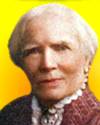
|  Elizabeth Blackwell (1821-1910) was an Anglo-American physician. While rejected by all the major medical schools in the nation because of her sex, her application to Geneva Medical School (now Hobart & William Smith Colleges in Geneva, New York) was referred to the student body. They accepted with great hilarity thinking it was a spoof from a rival school. Working with quiet determination, she turned aside the hostility of the professors, students, and townspeople. She earned her medical degree in 1849. Elizabeth Blackwell (1821-1910) was an Anglo-American physician. While rejected by all the major medical schools in the nation because of her sex, her application to Geneva Medical School (now Hobart & William Smith Colleges in Geneva, New York) was referred to the student body. They accepted with great hilarity thinking it was a spoof from a rival school. Working with quiet determination, she turned aside the hostility of the professors, students, and townspeople. She earned her medical degree in 1849.
 What is notable about the M.D. degree she earned? What is notable about the M.D. degree she earned? |
|  On 31 May of a certain year, the first electric railway opened at the Berlin Trades Exposition. On 31 May of a certain year, the first electric railway opened at the Berlin Trades Exposition.
 In what decade was the first electric railway exhibited? |
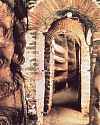 |  In 1578, the Catacombs of Rome were discovered by accident when a chamber was opened by some laborers digging for pozzolana earth. Baronius the ecclesiastical historian was one of the first to visit the new discovery. Fifteen years later, 18-yr-old Antonio Bosio began a lifetime exploring the catacombs. Gradually he found links between them, for narrow passageways had been dug from one to another, excavated in the soft rock (tufa). In 1578, the Catacombs of Rome were discovered by accident when a chamber was opened by some laborers digging for pozzolana earth. Baronius the ecclesiastical historian was one of the first to visit the new discovery. Fifteen years later, 18-yr-old Antonio Bosio began a lifetime exploring the catacombs. Gradually he found links between them, for narrow passageways had been dug from one to another, excavated in the soft rock (tufa).
 What was the purpose of these subterranean passages? |
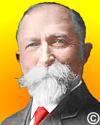
|  In 1884, a U.S. patent for "flaked cereal" - corn flakes was applied for by its inventor. He was trying to improve the vegetarian diet of his hospital patients, by searching for a digestible bread-substitute by the process of boiling wheat. He accidentally left a pot of boiled wheat to stand and become tempered. When it was put through a rolling process, each grain of wheat emerged as a large, thin flake. When the flakes were baked, they became crisp and light, creating an easy to prepare breakfast when milk was added. In 1884, a U.S. patent for "flaked cereal" - corn flakes was applied for by its inventor. He was trying to improve the vegetarian diet of his hospital patients, by searching for a digestible bread-substitute by the process of boiling wheat. He accidentally left a pot of boiled wheat to stand and become tempered. When it was put through a rolling process, each grain of wheat emerged as a large, thin flake. When the flakes were baked, they became crisp and light, creating an easy to prepare breakfast when milk was added.
 Can you name this inventor? |
When you have your answers ready to all the questions above, you'll find all the information to check them, and more, on the May 31 web page of Today in Science History. Or, try this link first for just the brief answers.
Fast answers for the previous newsletter for May 30: the decade including the year 1965; plutonium; Baron Marcel Bich; the decade including the year 1942; hovercraft; riveted leather hose; krypton.
|
 If you enjoy this newsletter, the website, or wish to offer encouragement or ideas, please send feedback by using your mail reader Reply button. If you enjoy this newsletter, the website, or wish to offer encouragement or ideas, please send feedback by using your mail reader Reply button. |
--
If you do not want to receive any more newsletters,
Unsubscribe To update your preferences and to unsubscribe visit
this link 


 On 31 May 1845, Rookes Evelyn Bell Crompton was born, a British engineer and inventor who as a young man made a steam road engine (1860) and worked on other steam road haulage projects. When his interests turned to electric lighting, importing then manufacturing arc lamps of his own improved design, he began a career pioneering in the electrical industry, establishing the Crompton Company. By 1883, he had provided public lighting for large buildings, markets and railway stations. His company expanded, making domestic electric appliances (such as for heating and cooking).
On 31 May 1845, Rookes Evelyn Bell Crompton was born, a British engineer and inventor who as a young man made a steam road engine (1860) and worked on other steam road haulage projects. When his interests turned to electric lighting, importing then manufacturing arc lamps of his own improved design, he began a career pioneering in the electrical industry, establishing the Crompton Company. By 1883, he had provided public lighting for large buildings, markets and railway stations. His company expanded, making domestic electric appliances (such as for heating and cooking).



 Louis J. Ignarro, born 31 May 1941, American pharmacologist who was co-awarded the 1998 Nobel Prize in Physiology or Medicine for the discovery that a simple molecule - just two atoms - acts as a signaling molecule in the cardiovascular system, an entirely new mechanism by which blood vessels in the body relax and widen. At first, major professional journals refused to publish his contention that a substance that is basic to nitroglycerin and part of the chemistry of smog is also crucial to the life process. But over the years, others repeated his work and confirmed his discovery that this molecule is a neurotransmitter that is, says Ignarro, "perhaps the most widespread signaling molecule that allows a variety of different cell types to communicate with one another."
Louis J. Ignarro, born 31 May 1941, American pharmacologist who was co-awarded the 1998 Nobel Prize in Physiology or Medicine for the discovery that a simple molecule - just two atoms - acts as a signaling molecule in the cardiovascular system, an entirely new mechanism by which blood vessels in the body relax and widen. At first, major professional journals refused to publish his contention that a substance that is basic to nitroglycerin and part of the chemistry of smog is also crucial to the life process. But over the years, others repeated his work and confirmed his discovery that this molecule is a neurotransmitter that is, says Ignarro, "perhaps the most widespread signaling molecule that allows a variety of different cell types to communicate with one another."  What is the molecule?
What is the molecule?
 Charles Greeley Abbot, born 31 May 1872, was an American astrophysicist who studied the radiation of the Sun. As director of the Smithsonian Astrophysical Observatory, he established a network of solar radiation observatories around the world. Beginning in May 1905 and continuing over decades, his studies of solar radiation led him to discover, in 1953, an interesting feature of the behaviour of the radiation.
Charles Greeley Abbot, born 31 May 1872, was an American astrophysicist who studied the radiation of the Sun. As director of the Smithsonian Astrophysical Observatory, he established a network of solar radiation observatories around the world. Beginning in May 1905 and continuing over decades, his studies of solar radiation led him to discover, in 1953, an interesting feature of the behaviour of the radiation. After decades of study, what did he discover about the sun's radiation?
After decades of study, what did he discover about the sun's radiation?
 Leo James Rainwater (1917-1986) was an American physicist who won a share of the Nobel Prize for Physics in 1975 for his part in studying certain atomic nuclei. During WW II, Rainwater worked on the Manhattan Project to develop the atomic bomb. In 1949 he began formulating a theory about atomic nuclei.
Leo James Rainwater (1917-1986) was an American physicist who won a share of the Nobel Prize for Physics in 1975 for his part in studying certain atomic nuclei. During WW II, Rainwater worked on the Manhattan Project to develop the atomic bomb. In 1949 he began formulating a theory about atomic nuclei.  What did he discover concerning atomic nuclei?
What did he discover concerning atomic nuclei? 
 Elizabeth Blackwell (1821-1910) was an Anglo-American physician. While rejected by all the major medical schools in the nation because of her sex, her application to Geneva Medical School (now Hobart & William Smith Colleges in Geneva, New York) was referred to the student body. They accepted with great hilarity thinking it was a spoof from a rival school. Working with quiet determination, she turned aside the hostility of the professors, students, and townspeople. She earned her medical degree in 1849.
Elizabeth Blackwell (1821-1910) was an Anglo-American physician. While rejected by all the major medical schools in the nation because of her sex, her application to Geneva Medical School (now Hobart & William Smith Colleges in Geneva, New York) was referred to the student body. They accepted with great hilarity thinking it was a spoof from a rival school. Working with quiet determination, she turned aside the hostility of the professors, students, and townspeople. She earned her medical degree in 1849. What is notable about the M.D. degree she earned?
What is notable about the M.D. degree she earned?  On 31 May of a certain year, the first electric railway opened at the Berlin Trades Exposition.
On 31 May of a certain year, the first electric railway opened at the Berlin Trades Exposition. In what decade was the first electric railway exhibited?
In what decade was the first electric railway exhibited?
 In 1578, the Catacombs of Rome were discovered by accident when a chamber was opened by some laborers digging for pozzolana earth. Baronius the ecclesiastical historian was one of the first to visit the new discovery. Fifteen years later, 18-yr-old Antonio Bosio began a lifetime exploring the catacombs. Gradually he found links between them, for narrow passageways had been dug from one to another, excavated in the soft rock (tufa).
In 1578, the Catacombs of Rome were discovered by accident when a chamber was opened by some laborers digging for pozzolana earth. Baronius the ecclesiastical historian was one of the first to visit the new discovery. Fifteen years later, 18-yr-old Antonio Bosio began a lifetime exploring the catacombs. Gradually he found links between them, for narrow passageways had been dug from one to another, excavated in the soft rock (tufa). What was the purpose of these subterranean passages?
What was the purpose of these subterranean passages? 
 In 1884, a U.S. patent for "flaked cereal" - corn flakes was applied for by its inventor. He was trying to improve the vegetarian diet of his hospital patients, by searching for a digestible bread-substitute by the process of boiling wheat. He accidentally left a pot of boiled wheat to stand and become tempered. When it was put through a rolling process, each grain of wheat emerged as a large, thin flake. When the flakes were baked, they became crisp and light, creating an easy to prepare breakfast when milk was added.
In 1884, a U.S. patent for "flaked cereal" - corn flakes was applied for by its inventor. He was trying to improve the vegetarian diet of his hospital patients, by searching for a digestible bread-substitute by the process of boiling wheat. He accidentally left a pot of boiled wheat to stand and become tempered. When it was put through a rolling process, each grain of wheat emerged as a large, thin flake. When the flakes were baked, they became crisp and light, creating an easy to prepare breakfast when milk was added. Can you name this inventor?
Can you name this inventor? If you enjoy this newsletter, the website, or wish to offer encouragement or ideas, please send feedback by using your mail reader Reply button.
If you enjoy this newsletter, the website, or wish to offer encouragement or ideas, please send feedback by using your mail reader Reply button. 

Δεν υπάρχουν σχόλια:
Δημοσίευση σχολίου